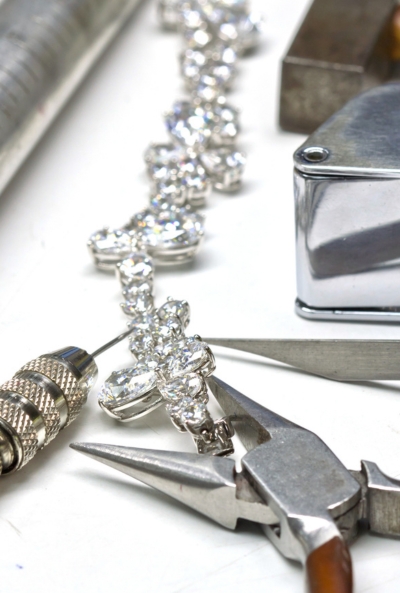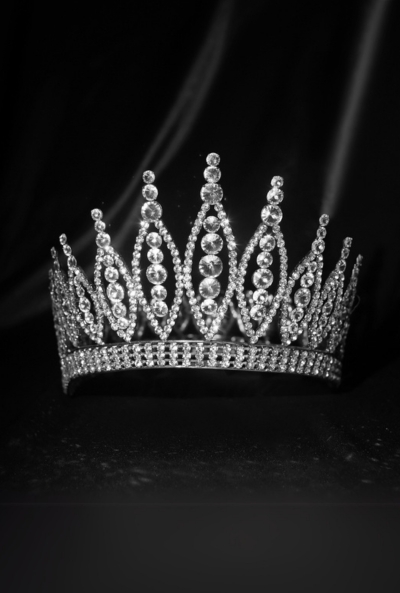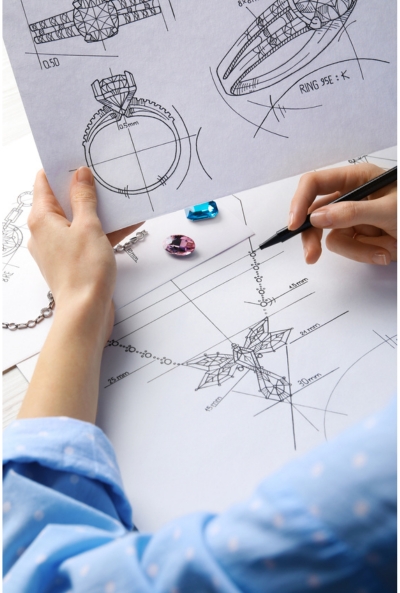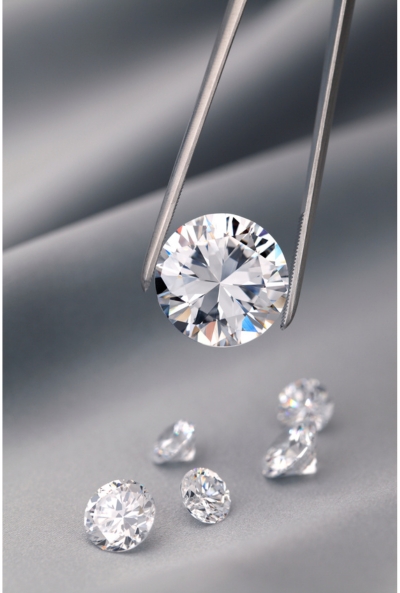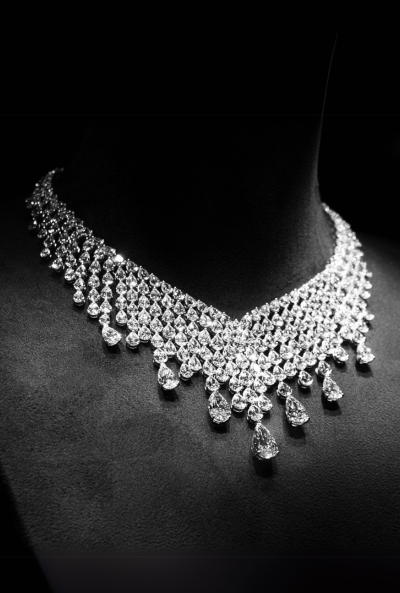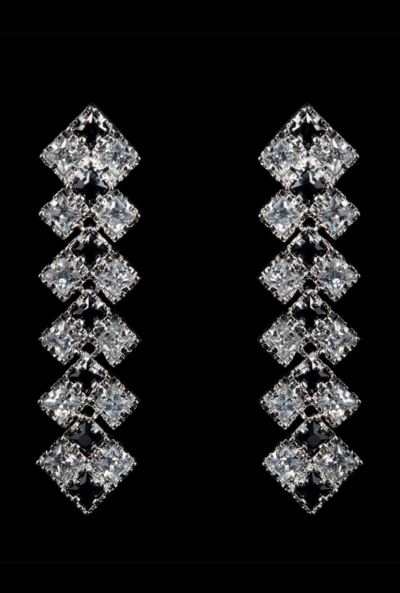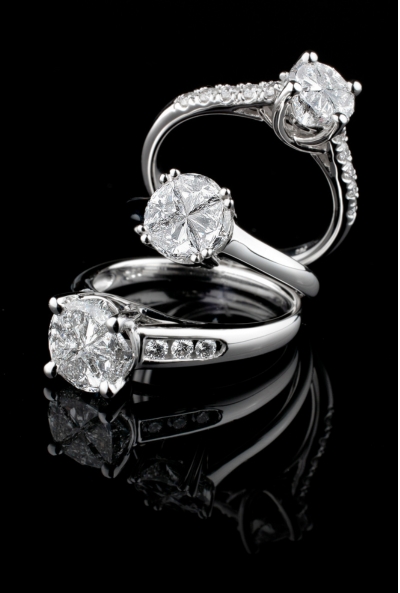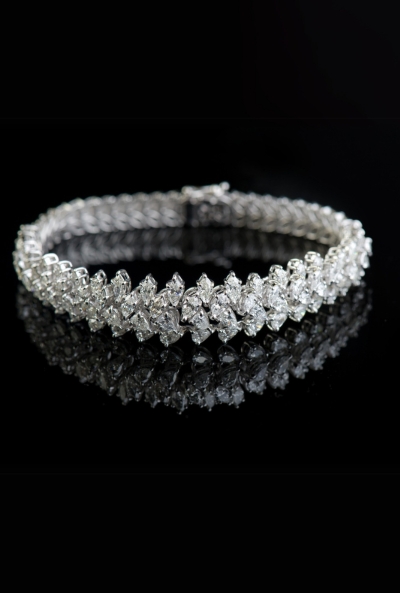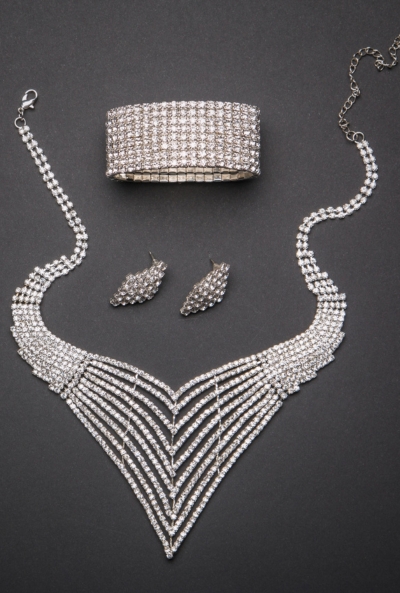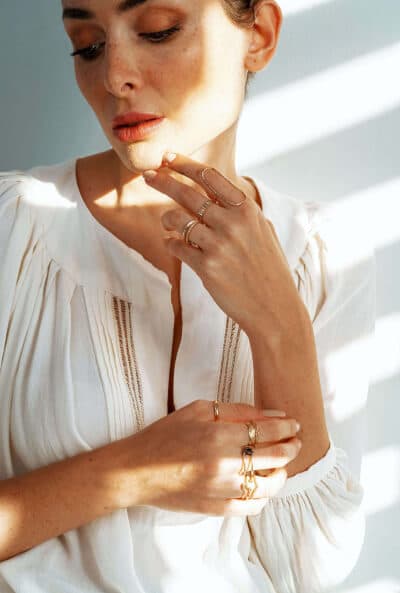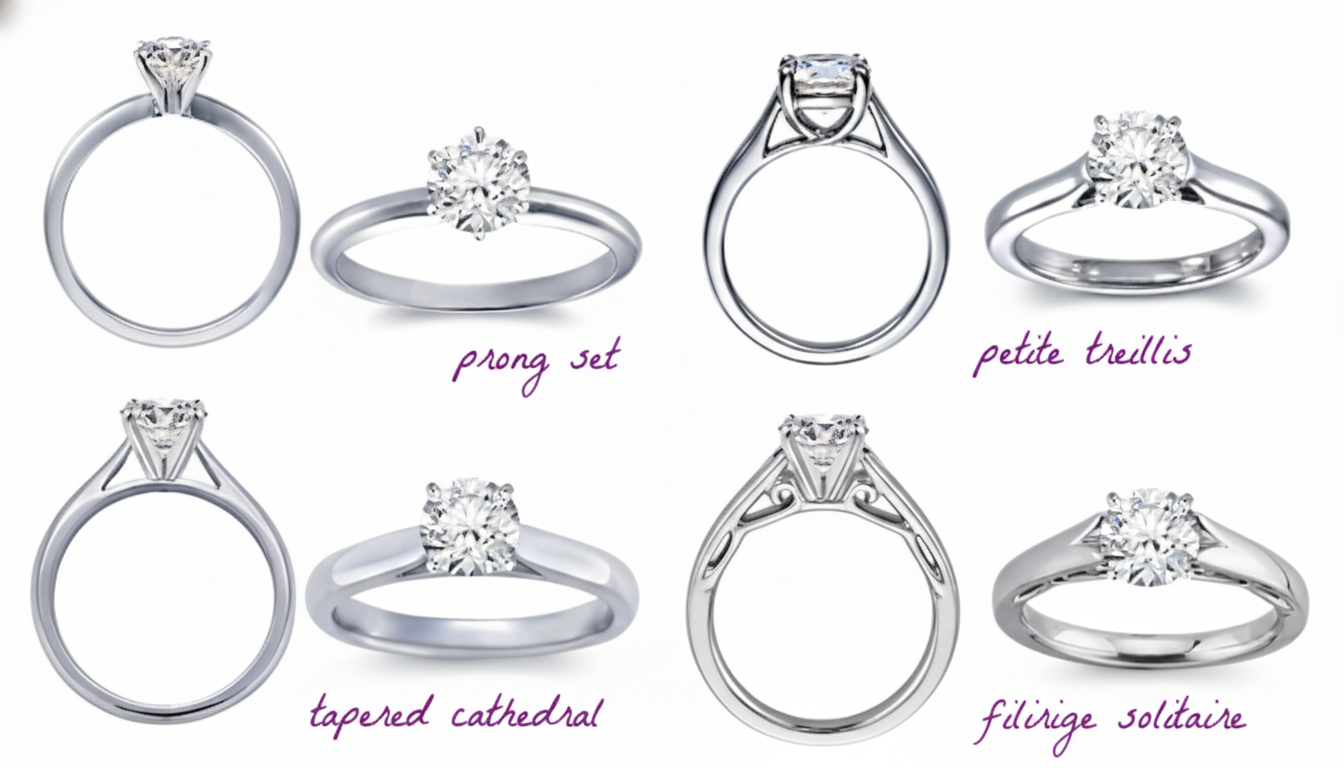
Diamond Ring Settings
Table of Contents
- Introduction: Understanding Diamond Ring Settings
-
- Popular Diamond Ring Settings Explained
-
- Choosing the Right Setting for Your Diamond Shape
-
- Factors to Consider When Choosing a Setting
-
- Conclusion
-
- FAQs
Introduction: Understanding Diamond Ring Settings
When it comes to selecting the perfect diamond ring, the setting plays a crucial role in both the aesthetics and security of the gemstone. The setting not only holds the diamond in place but also enhances its brilliance and overall appearance. In this guide, we’ll explore the most popular diamond ring settings and provide insights into choosing the right one for your diamond shape and personal style.
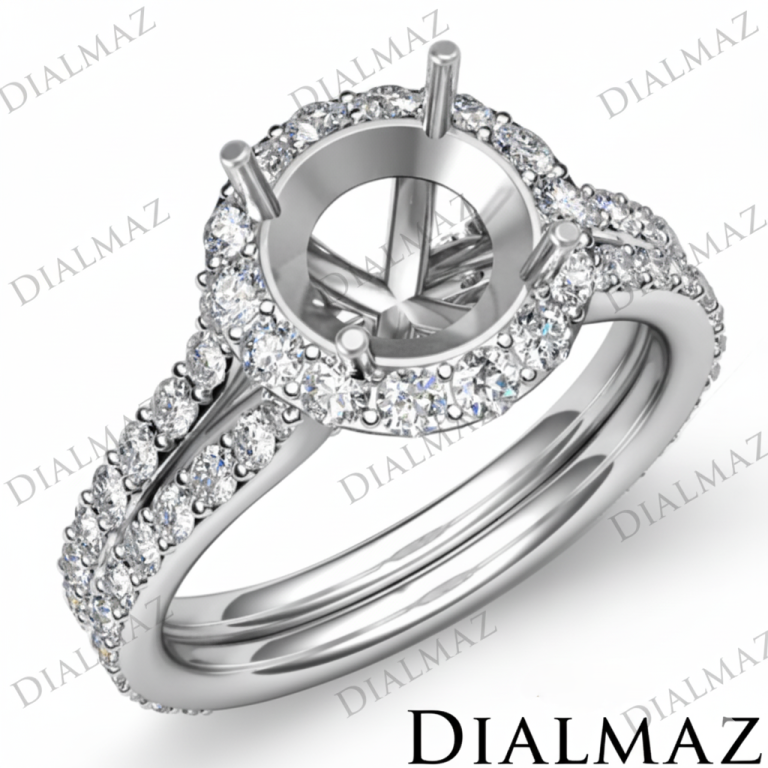
Popular Diamond Ring Settings Explained
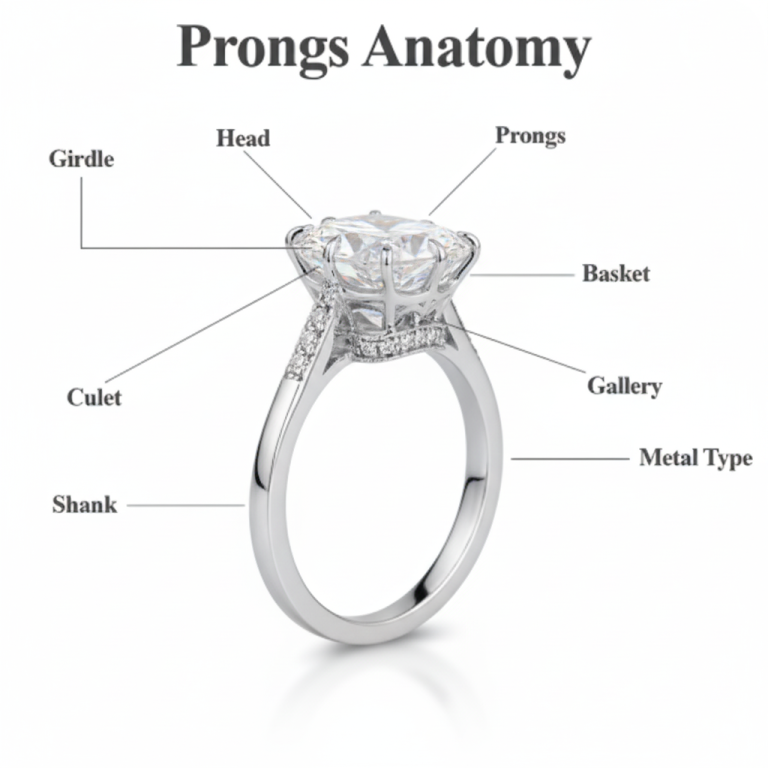
Prong Setting
The prong setting is one of the most traditional and popular choices for diamond rings. It involves securing the diamond with metal prongs that hold the stone in place, allowing maximum light exposure and enhancing the diamond’s brilliance. Typically, prong settings use four or six prongs, with six prongs offering more security for larger stones.
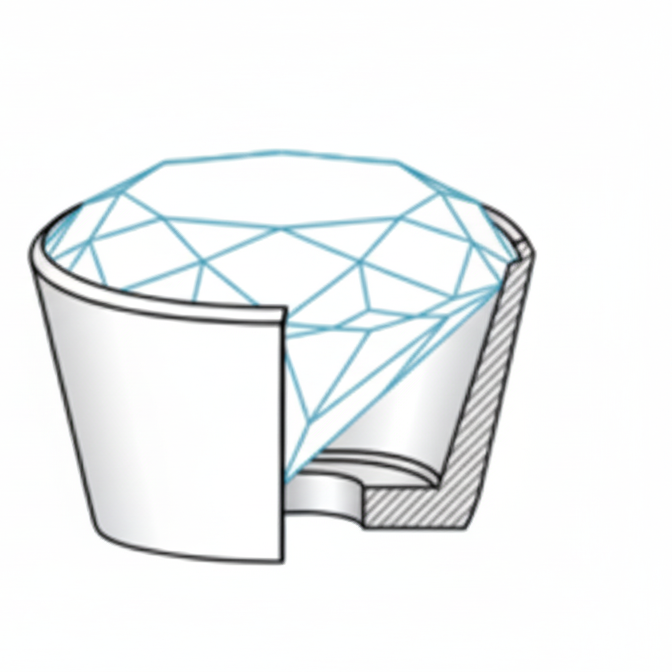
Bezel Setting
In a bezel setting, a metal rim encircles the diamond, holding it securely in place. This setting offers excellent protection for the stone, making it ideal for those with active lifestyles. Bezel settings also provide a sleek, modern look and can make the diamond appear larger due to the surrounding metal.
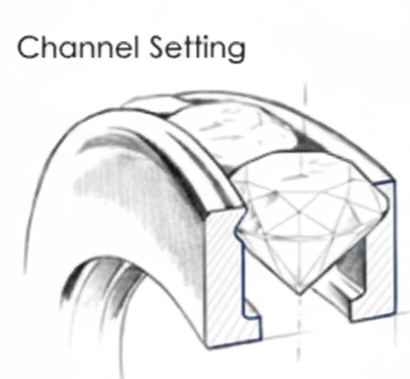
Channel Setting
The channel setting involves placing diamonds or gemstones between two metal strips, creating a continuous line of stones. This setting is popular for wedding bands and offers a smooth, flush appearance with no prongs or beads to catch on clothing.
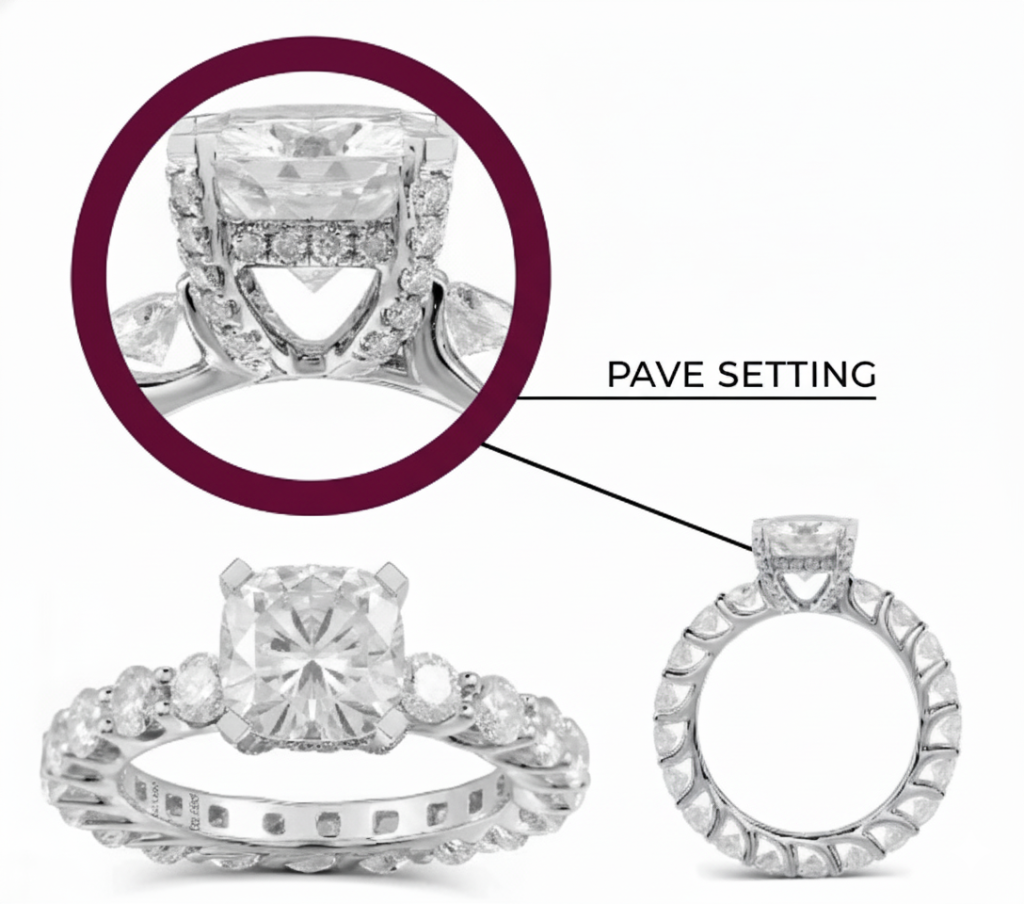
Pave Setting
Pave settings feature small diamonds set closely together using tiny beads or prongs, creating a surface that appears to be paved with diamonds. This setting adds sparkle and enhances the overall brilliance of the ring, making it a popular choice for accent stones.
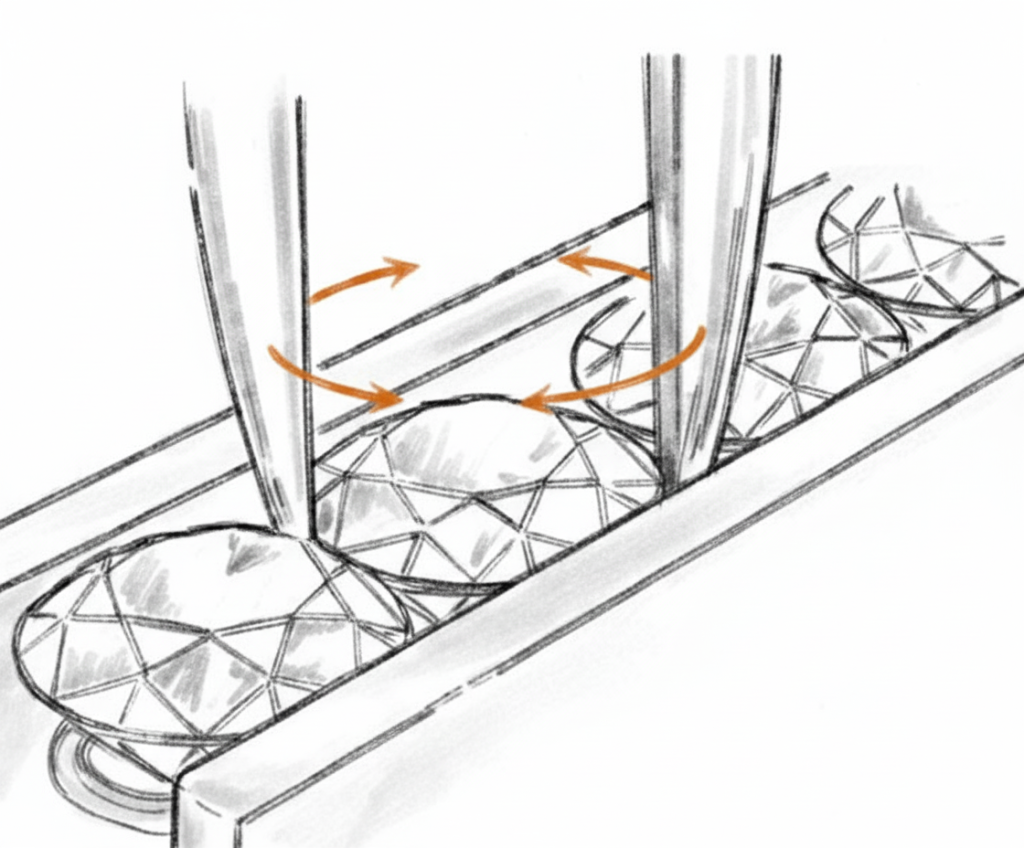
Bar Channel Setting
Similar to the channel setting, the bar channel setting secures diamonds between vertical metal bars. This variation provides additional security and a distinct look, often used in modern and contemporary designs.
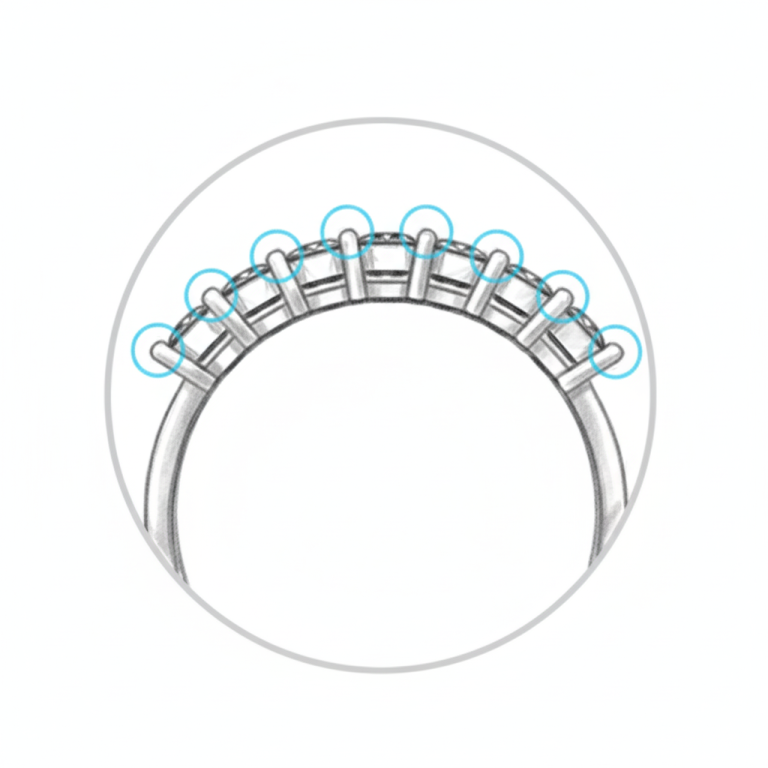
Shared Prong Setting
In a shared prong setting, multiple diamonds are set side by side, with each diamond sharing a prong with its neighbor. This setting allows for more stones to be set in the band, creating a continuous line of diamonds with minimal metal visibility.
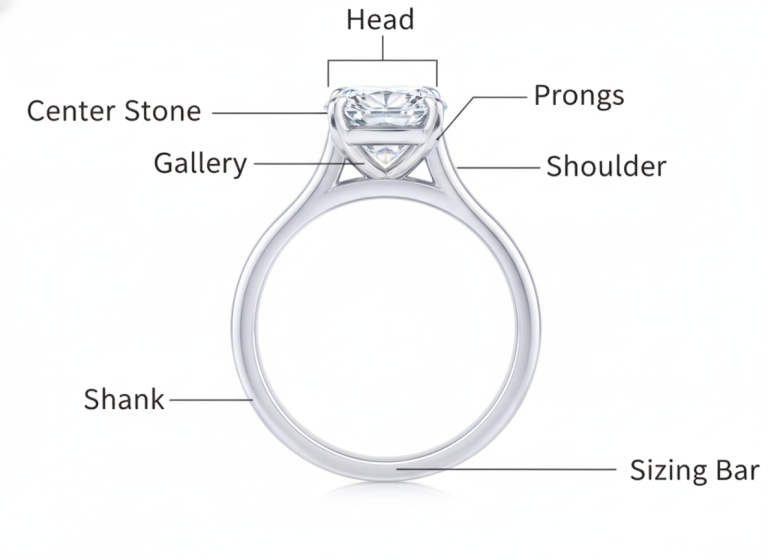
Inset/Flush Setting
An inset or flush setting involves setting the diamond into the band so that the top of the stone is level with the surface of the metal. This setting offers a sleek, modern look and is ideal for those seeking a low-profile design.
Choosing the Right Setting for Your Diamond Shape
Different diamond shapes pair better with certain settings. Here’s a guide to help you choose the best setting for your diamond shape:
Marquise Diamond Ring Settings
Marquise diamonds are elongated with pointed ends, making them susceptible to chipping. A six-prong setting is recommended to protect the tips and secure the stone. Marquise diamonds can be set in a traditional north-south orientation or a modern east-west setting for a unique look.
Round Diamond Ring Settings
Round diamonds are versatile and can be set in various settings, including prong, bezel, and pave. A six-prong setting is often preferred for round diamonds, as it provides maximum security and enhances the diamond’s brilliance.
Oval Diamond Ring Settings
Oval diamonds can be set in both north-south and east-west orientations. The east-west setting offers a contemporary twist and can make the diamond appear larger. A six-prong setting is recommended for oval diamonds to ensure security and stability.
Solitaire Diamond Ring Settings
Solitaire settings feature a single diamond as the focal point, showcasing its brilliance and beauty. Prong settings are commonly used for solitaire rings, allowing maximum light exposure and enhancing the diamond’s sparkle.
Choosing the Right Setting for Your Diamond Shape
When selecting a diamond ring setting, consider the following factors:
Durability
Choose a setting that will protect your diamond from damage. Bezel and channel settings offer excellent protection, while prong settings may expose the diamond to more risk.
Aesthetics
Consider the overall look you desire. Bezel settings offer a sleek, modern appearance, while prong settings provide a more traditional look. Pave and shared prong settings add extra sparkle.
Security
Ensure the setting securely holds the diamond in place. Six-prong settings offer more security for larger stones, while bezel settings provide a secure encirclement of the diamond.
Lifestyle Considerations
If you have an active lifestyle, consider a setting that minimizes the risk of the diamond catching on clothing or being damaged. Bezel and channel settings are ideal for active individuals.
Conclusion
Selecting the perfect diamond ring setting involves considering various factors, including the diamond shape, desired aesthetics, and lifestyle. By understanding the different setting types and their benefits, you can choose a setting that enhances the beauty and security of your diamond ring.
Frequently Asked Questions (FAQs)
1. What ring setting is best for diamonds?
The best ring setting for diamonds depends on your priorities. Prong settings maximize brilliance and light exposure, bezel settings offer durability and protection, while pavé or halo settings enhance sparkle. Consider your lifestyle, diamond shape, and desired aesthetic before choosing.
2. How many types of diamond settings are there?
There are numerous diamond ring settings, but the most popular include prong, shared prong, bezel, channel, bar channel, pavé, tension, flush/inset, halo, cathedral, cluster, eternity, split-shank, and infinity settings. Each offers a unique way to showcase and protect the diamond.
3. What is a setting on a diamond wedding ring?
A setting is the way a diamond or gemstone is mounted into the ring’s band. It holds the stone securely while highlighting its beauty. Common settings include prong, bezel, channel, and pavé, each offering different levels of sparkle, security, and style.
4. What are the 4 types of rings?
Generally, rings can be categorized into four main types:
- Engagement Rings: Designed to symbolize a proposal or commitment.
- Wedding Rings/Bands: Exchanged during the marriage ceremony, often simpler in design.
- Anniversary Rings: Commemorate milestones or special occasions.
Fashion Rings: Worn for style and personal expression, often featuring various gemstones and designs.

